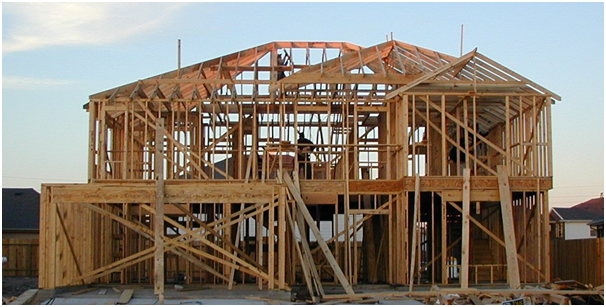Timber frames are becoming more popular throughout the building industry. Used as the skeleton for a number of different structures, including homes, businesses and public buildings, more and more people are choosing this versatile material to provide the bare bones of their build.

If you are exploring your options when it comes to timber frames, the sheer amount of choice out there can be confusing.
If you do not know your plywood from your heavy timber, we have compiled this handy guide to the different woods used in timber frame houses and buildings.
Why choose a timber frame?
What are the benefits of timber frame houses? One of the main attractions of using timber is that it is both cost and time effective as a building material. Timber frames are also extremely environmentally friendly and can reduce energy bills by providing fantastic insulation.
What are the best woods to use?
Heavy timber
This refers to lumber with a minimum smallest dimension of 4.5” that is usually used for beam and post construction. Thanks to its large dimension, heavy timber can support bigger loads and can be used for long spans. It is also extremely fire resistant.
Light structural timber
Used mainly in residential buildings, light structural timber is milled from softwood trees and shaped into standard dimensions.
Finger-jointed lumber
This timber is made by using dry, short pieces of wood that are machined on the ends and joined with a water-repellent adhesive. This technique is particularly environmentally friendly, as it uses smaller pieces of wood to produce a large, more stable product.
Glulam
This multi-layered wood uses different thicknesses of wood held together with glue. This ensures a very strong finish, perfect for posts and beams. Glulam is commonly used in roof framing.
Plywood
Although it can be used for many structural elements, plywood usually comes in 4’ x 8’ panels made of thin sheets of veneer bonded together with glue. The grain of each layer runs in an alternate direction, making a very strong and stable material.
Cross-laminated timber
This timber is made by stacking woods before gluing them together. It has excellent acoustic and thermal properties and is often used to build roofs, floors and load-bearing walls.
